Contents
Plum Souvenir of the East is the result of domestic selection. Due to the compact size of the tree, pruning and other care for it is simplified. The variety is valued by gardeners for the good taste of fruits that are suitable for processing.
History of variety breeding
The Chinese plum Souvenir of the East was obtained at the Voronezh ASU. Breeders A. N. Venyaminov and A. T. Turovtseva worked on it. The East Asian varieties Giant and Zarya became the parents.
Description plum Souvenir of the East
Plum Souvenir of the East – a tree of medium vigor. It reaches a height of 2–2,5 m. The crown is spreading, shoots of medium thickness and length, bare, red-brown. The bark is dark brown, with a purple undertone.
The leaves are green, matte, leathery, obovate, with a pointed tip. The plate is flat or slightly concave, the edges are even, with small teeth. Petioles are short, no more than 1 cm. Plum forms small flowers.
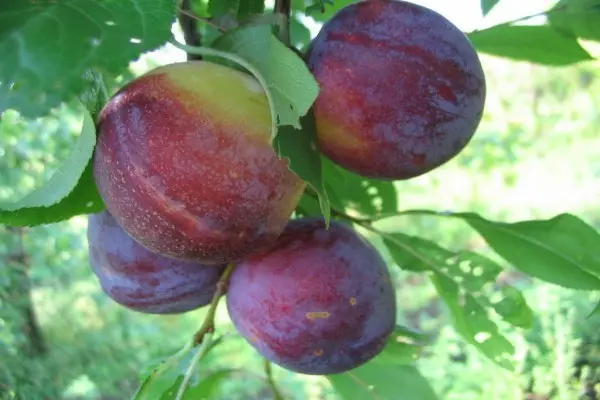
Characteristics of Chinese plum fruits:
- large size;
- weight about 40 g;
- round shape;
- as it matures, the color changes from orange to maroon;
- pronounced groove;
- orange dense pulp with a pronounced aroma;
- rounded small bone, easily separated from the pulp.
Plum has a crispy juicy pulp of sweet taste with spicy notes and slight sourness. In taste and appearance, the fruits resemble peach. The pulp has a rich composition: 19,3% – dry matter; 13,4% are sugars and 0,99% are organic acids.
Characteristics of the plum Souvenir of the East
According to its characteristics, Souvenir of the East stands out among other varieties of Chinese plum with a high yield and presentation of fruits.
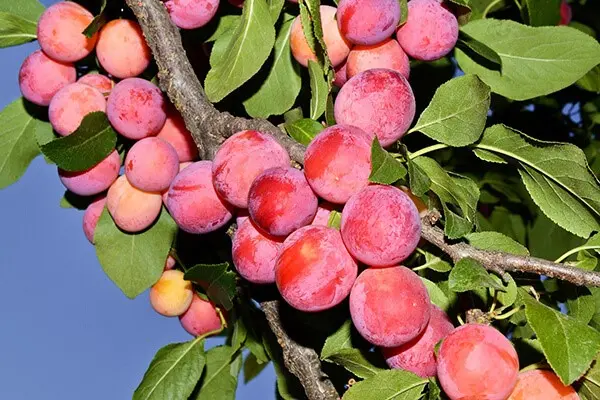
Drought resistance, frost resistance
Drought tolerance is average. Watering is necessary for trees during flowering and fruit formation. No less detrimental to the culture of stagnant moisture in the soil.
Plum is valued for its high winter hardiness. Spring thaws are the most dangerous for plums. The tree quickly leaves the dormant stage, which leads to a warming of the bark. Therefore, in cold regions, it is recommended to graft the variety onto more winter-hardy trees.
Plum pollinators Souvenir of the East
Plum Souvenir of the East does not bear fruit without a pollinator. It is best to use diploid cherry plum or Giant variety plum for these purposes. Other varieties of plums that bloom early will also work.
The flowering of the variety occurs at the end of April – the beginning of May. The shoots are strewn with flowers. Harvest can be harvested on average – in mid-August.
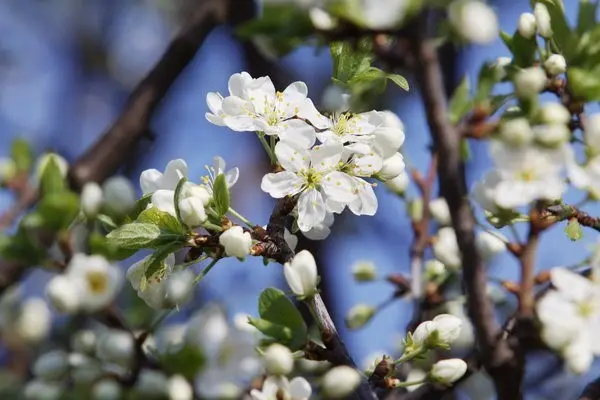
Yield and fruiting
The variety is characterized by high yield: 26–45 kg per tree. The fruits are collected in large clusters and ripen on bouquet branches. Plums on summer shoots grow singly.
Scope of berries
The fruits of the variety have a table purpose. It is recommended to use them fresh, process them into juice or jam. The variety is not suitable for canning, because the fruits are very soft.
Disease and pest resistance
The variety has low resistance to clasterosporia. Preventive spraying and adherence to agricultural practices help protect the tree from diseases and pests.
Advantages and disadvantages of the variety
The main advantages of the variety Souvenir of the East:
- bright fruits of large sizes;
- high winter hardiness;
- decent productivity.
When growing a variety, its disadvantages are taken into account:
- soaking plums;
- the need for pollinators.
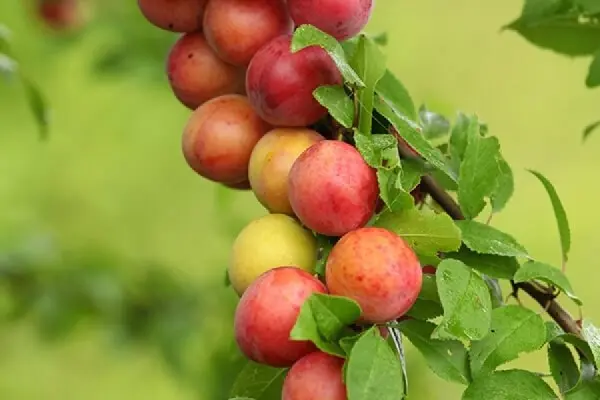
Features of landing
Proper planting is the key to a high survival rate of the seedling and its development. Particular attention is paid to the choice of location, preparation of seedlings and soil.
Recommended dates
The time for planting the Chinese Plum Souvenir of the East depends on the weather conditions. If winter comes late in the region, then work is carried out in the fall, when the leaf fall ends. If there is a chance of early snowfall, then planting is carried out in the spring, before the leaves bloom.
Choosing the right place
A place for growing Chinese plum is chosen taking into account a number of factors:
- illumination;
- location of groundwater;
- soil composition and moisture content.
Chinese plum is planted on the south or west side of the site. So the tree will receive the necessary natural light. Places in the lowlands where moisture constantly accumulates are not suitable for planting. Permissible groundwater depth is 1,5 m or more.
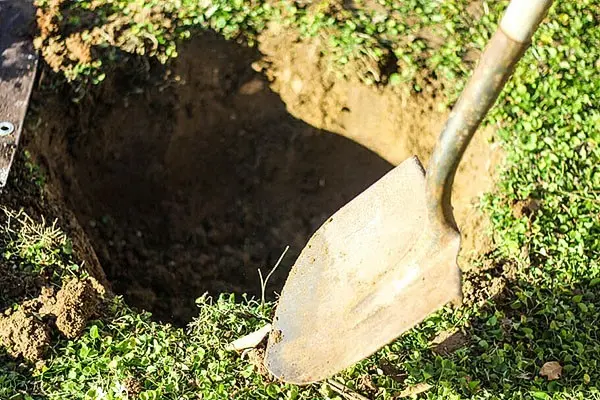
Plum grows well on any soil except acidic. The largest yields are obtained when growing a tree in a light soil rich in nutrients.
What crops can and cannot be planted nearby
It is best to plant plums in a group of 2-3 varieties. Between the trees leave 3-4 m.
The culture gets along well with apple trees, raspberries, currants and gooseberries. Plum is removed as much as possible from cherries, cherries and pears.
Selection and preparation of planting material
For planting, choose healthy seedlings of the Souvenir of the East variety without damage. The optimal thickness of the shoots is 2,5 cm, length – 50 cm. If the roots of the tree are too dry, they are kept in water for 4-5 hours before planting.
Landing algorithm
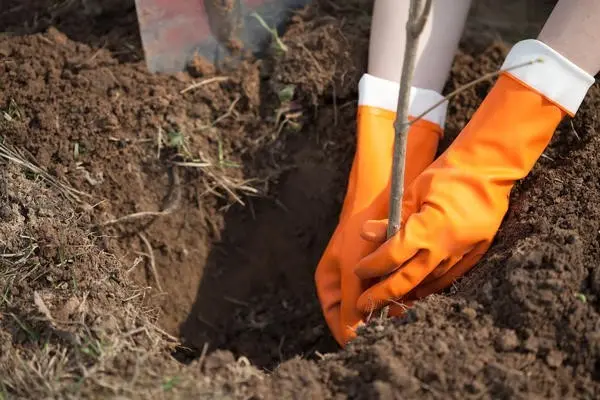
The order of planting plum varieties Souvenir of the East:
- First, a hole is dug. To fill it, fertile land and peat are taken in equal quantities. 180 g of superphosphate and 100 g of potassium salt are added to them.
- The resulting substrate is poured into the pit.
- When the soil settles, proceed to the preparation of the seedling. Soil is poured into the hole to make a small hill.
- A plant is placed on top, its roots are straightened. The root collar is left at a distance of 5-7 cm from the ground.
- The roots are covered with soil. The seedling is watered.
- Perform mulching of the trunk circle with humus or peat.
Plum Aftercare
When growing a plum Souvenir of the East, it is important to provide it with constant care.
Plums are watered 3 to 5 times per season. The introduction of moisture is necessary during flowering and fruiting. For young plantings, 4 buckets of water are enough, an adult tree needs 10 buckets.
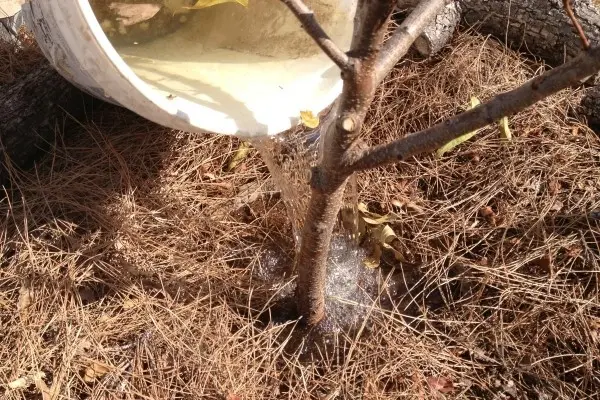
After planting, full-fledged top dressing begins only for 2 years. In spring, the plum is fertilized with a mineral complex containing nitrogen, phosphorus and potassium. For summer processing, nitrogen is removed from the composition. Every 3 years, the soil under the drain is dug up and compost is added.
Pruning forms the crown of the tree. The tree is pruned in spring or autumn, when sap flow is slow. Eliminate dry, broken, frozen shoots.
Preparation of plums for winter begins with abundant watering. Moist soil will protect the roots of the tree from freezing. Then they spud the trunk and mulch the soil with humus. For young plantings, a wooden frame is prepared, to which burlap or agrofibre is attached. From rodents, the plum is closed with a metal or tin casing.
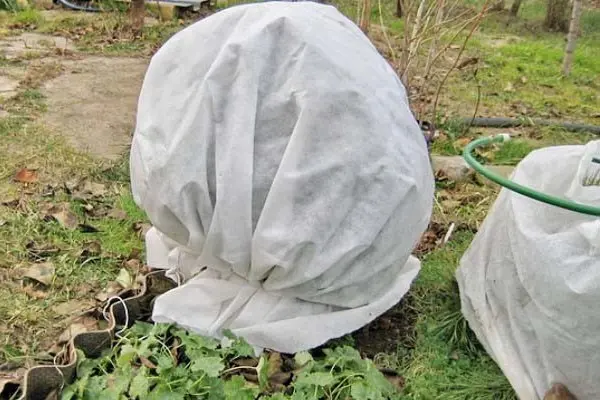
Diseases and pests, methods of control and prevention
The main crop diseases are listed in the table:
Disease | Evidence | Fight | Prevention |
Klyasterosporiosis | Dark spots on leaves and fruits. | Treatment of trees with copper chloride. | 1. Thinning crown. 2. Removal of root shoots. 3. Spraying with fungicides. |
Comedy | A yellowish resin flows out of the cracks in the bark, the plum gradually weakens and dies. | Treatment of the trunk with copper sulphate and garden pitch. |
The table shows the pests of the Chinese plum and how to deal with them:
Pest | Evidence | Fight | Prevention |
aphid | Aphid colonies live on the underside of leaves and feed on tree sap. | Spraying with a solution of insecticide “Karbofos”. | 1. Digging up the soil in autumn. 2. Whitewashing the trunk, cleansing it of moss and dead bark. 3. Spraying trees with insecticide solutions. 4. Treatment of plums with tobacco dust. |
Plodojorka | Codling moth caterpillars feed on fruits and gnaw passages in fruits, eat plum leaves. | Treatment with Actellik. |
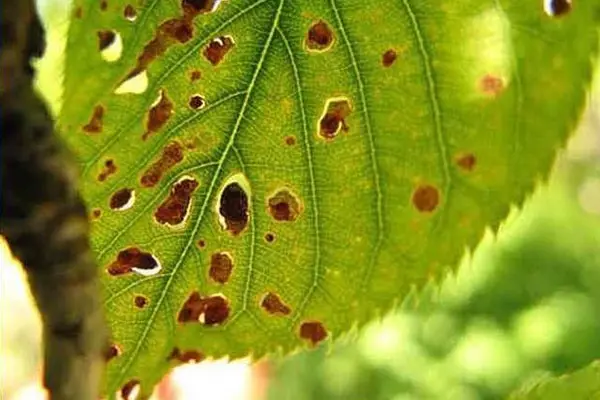
Conclusion
Plum Souvenir of the East is suitable for growing in your own garden or on an industrial scale. The variety attracts gardeners with high yields, large and high-quality fruits. To protect against fungal diseases, regular spraying is performed.
Reviews










